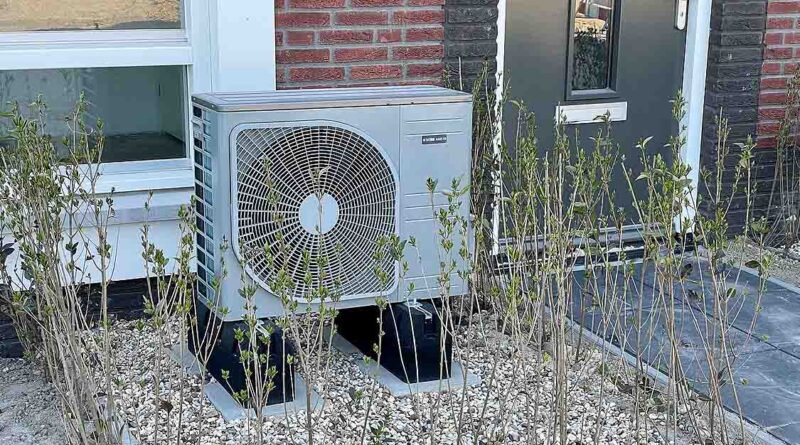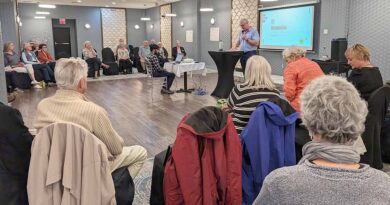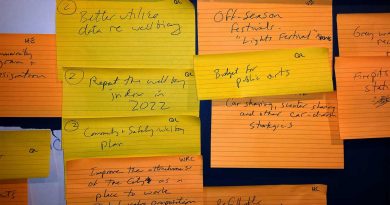Experts On Heat Pumps
By Fred Larsen – Special to SUNonline/Orillia
Many Orillians are thinking heat pumps are in their future, if not already in their homes. Local providers of heating and air conditioning systems have an increase in the number of installations.
“There isn’t a week goes by when we’re not installing heat pumps,” said Dan LeBlanc, owner of Simcoe-Muskoka Home Comfort. “Two years ago, as part of a provincial program for low-income households, we did about 500 installations.”
Peter Messenger, owner of A1 Air Conditioning and Heating in Oakville, reports that heat pumps have risen from 10% of his company’s installations to about half, almost overnight. “I’m surprised at how quickly the general public’s mindset has changed on heat pumps,” said Messenger, “I always knew it would happen. I just didn’t know it would happen this quickly.”

Ben Lowry, of Lowry Building Company in Orillia, also sees the trend. “When we build a high-performance building envelope, we assume the user will be using a heat pump, which justifies the cost of sealing the building and adding insulation. We consider the building envelope and the heat pump as a single system.”
As heat pumps become a popular, energy-efficient and environmentally cleaner alternative to burning fossil fuels for home heating and cooling, more options are becoming available.
The experts recommend home-owners consider a few factors before joining the trend to heat pumps:
- An electric heat pump requires a minimum 125 amp electrical service. A 200 amp service is usually recommended. A tight building envelope is important. The tighter (no leaky windows or doors), the more effective the heat pump will be. “For an old century home with poor insulation and old windows and doors,” said LeBlanc, “the money would be better spent upgrading the windows and doors and increasing insulation.” Ben Lowry agrees, “The low-hanging fruit is improving the insulation and air tightness of the building envelope. That work will pay off forever, no matter the heating and cooling systems.”
- What’s the home-owner’s budget? Buying and installing a heat pump will be more expensive than installing an AC unit or a furnace separately. And the payback period won’t be quick. When choosing a heat pump, said LeBlanc, “You’re hedging against higher costs for natural gas or propane in the future.” Don Shakell, of Shakell Heating & Cooling, estimates these costs will increase significantly “because of carbon charges, product and delivery.” (Currently, carbon charges are returned to customers in quarterly cheques via the federal government’s price-on-carbon program.) One Shakell customer said he saved over $3,000 in electrical costs over a 1-year period after upgrading to a heat pump from an all-electric furnace system with standard air conditioning.
- The negative environmental impact of burning fossil fuels is on the minds of many consumers. Heating and cooling buildings is responsible for about 13% of Canada’s greenhouse gas emissions. The federal government’s goal is to cut those emissions by 37 per cent of 2005 levels by 2030, with an overall goal of reaching net zero by 2050. Heat pumps consume less energy than conventional sources for the same amount of heat or cooling. “At minus 15C outdoor temperature, a heat pump will deliver two units of output for every one unit of energy input,” said LeBlanc. “In Ontario, we’re running pretty much on clean energy, so a heat pump is relatively emission-free.”
What do heat pump experts say users will notice? “They will see cost savings,” said LeBlanc. “As long as they go with a good brand, they’ll notice a lower energy bill for both heating and cooling.” They’ll also notice some other differences, such as a longer run-time than with a natural gas furnace. “The heat pump does not heat quickly,” said LeBlanc. “The air from a heat pump won’t feel as warm as from a conventional furnace.”
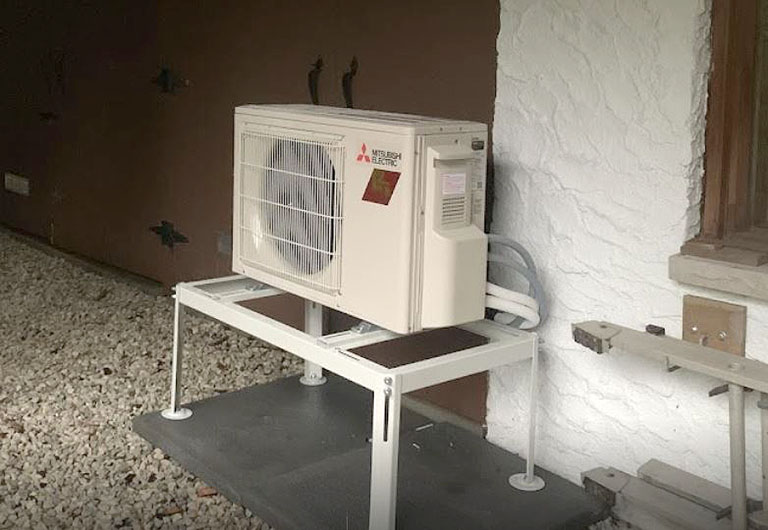
That’s the reason why Don Shakell advises users not to set back their thermostats overnight or for short periods. “Changing the indoor temperature takes a long time. It’s not a good idea to program the thermostat. It’s best to set the desired temperature, and leave it alone.”
Some heat pump users report that the quality of their heat feels more comfortable – like radiant heat. LeBlanc has some customers who even drop the temperature on their thermostat and still find it comfortable.
Still, myths surrounding heat pumps abound. These four are the most common ones:
Myth #1: Heat pumps don’t work in cold climates. In fact, they do work. Locally, LeBlanc has seen “incredibly good results” this winter. “But in our climate a heat pump needs to be paired with an electric coil or natural gas back-up. It can’t do 100% of the work as a sole source with our temperatures,” he said. Don Shakell agrees. “Cold Climate Air Source Heat Pumps work well in this climate,” he said. “They got a bad name in the 1970s because they weren’t designed for our climate. They’re much more effective now. The electric heat pump will carry most of the load and automatically switch to the gas or electric furnace when the heat pump does not have adequate capacity to satisfy the needs.” Ben Lowry is very happy with the system in his own 1600 sq. ft. house, “Our most expensive month is usually January, when the utility bill reaches $130-150.”
Myth #2: They’re too expensive. Heat pumps are more affordable now than they’ve ever been. Government subsidy programs have been helpful. Will these subsidies continue? “They have to,” said LeBlanc. As for the cost of installing a heat pump? “Installation of an NRCan rated add on heat pump costs $7,500,” said Shakell. “An add-on (coil and outdoor unit only) costs less than a furnace and heat pump system – installation of a hybrid or all-electric system – will cost between $14,000 and $23,000. Heat pumps are a better investment now than ever before, as air-conditioners will no longer be manufactured after 2030 at the latest.”
Myth #3: Heat pumps don’t generate much heat. Heat pumps do not create heat. They move it from one place to another. Even in cold outdoor temperatures, there’s heat to be found. A heat pump works gradually and slowly. A gas furnace has a higher and faster temperature rise.
Myth #4: Heat pumps are complicated. “Not true,” said Don Shakell. “They are actually quite simple systems – like a refrigerator. Ninety-five percent of the problems we see are due to poor installation.”
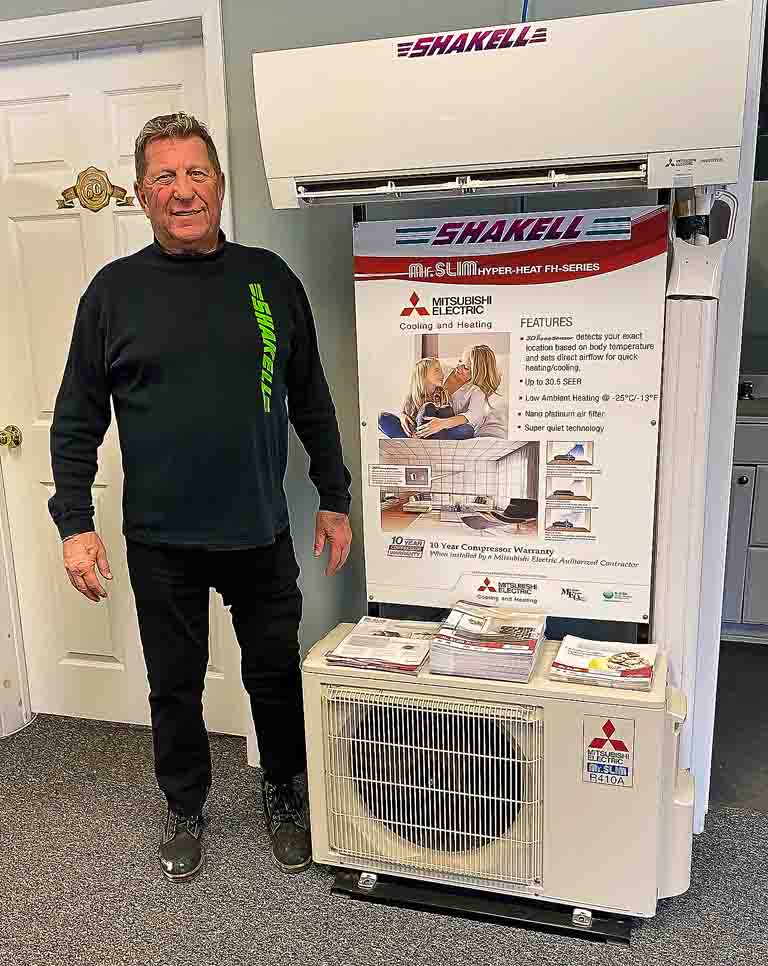
When should you install a heat pump? “The best time is when your current furnace and AC systems are nearing the end of their lives,” said Shakell.
LeBlanc agrees, “For those who have a newer furnace, a dual-fuel system totally makes sense – a heat pump with a back-up.”
How do you find a competent local installer? “A Residential AC System Mechanic Licence is the bare minimum qualification you should expect,” said LeBlanc. “Factory training on the product being installed is a bonus,” Shakell adds.
A competent installer, after determining there’s adequate electrical capacity in the house, will consider the age of the current furnace and how it matches with a new heat pump. “Matched systems always perform better – especially communicating systems,” said Shakell. Installers will also look at factors determining the amount of heat that comes into the house, the age of the thermostat and the size and state of the duct work.
Heat pumps are increasingly popular in Orillia and in the rest of Canada. As evidence, builders and technicians are putting them into their own homes. One of Shakell’s technicians has just commissioned a hybrid heat pump system in his home. He reports that it has been keeping his home “extremely comfortable” at a low cost.
Ben Lowry is another example. “We love it in our house. A heat pump is a simple technology for both heating and cooling. It’s very responsive – there’s always a consistent temperature. Ours has been working well – down to minus 15C outside. That’s when our electric backup kicks in—which is almost never.”
More about heat pumps from SUNonline/Orillia
(Images Supplied)

